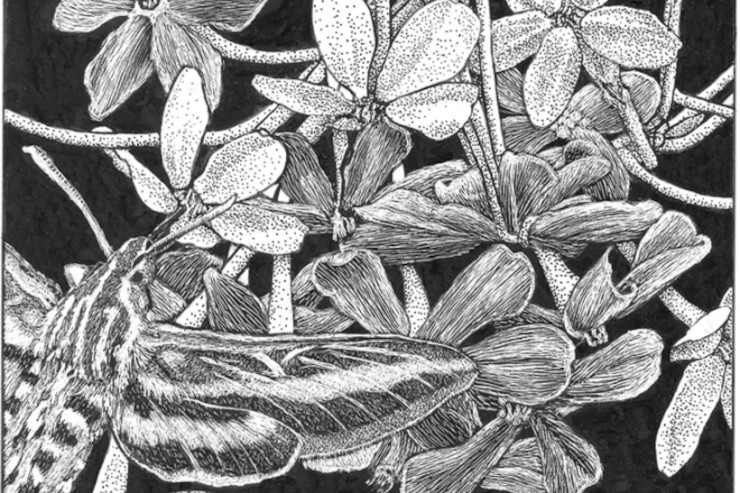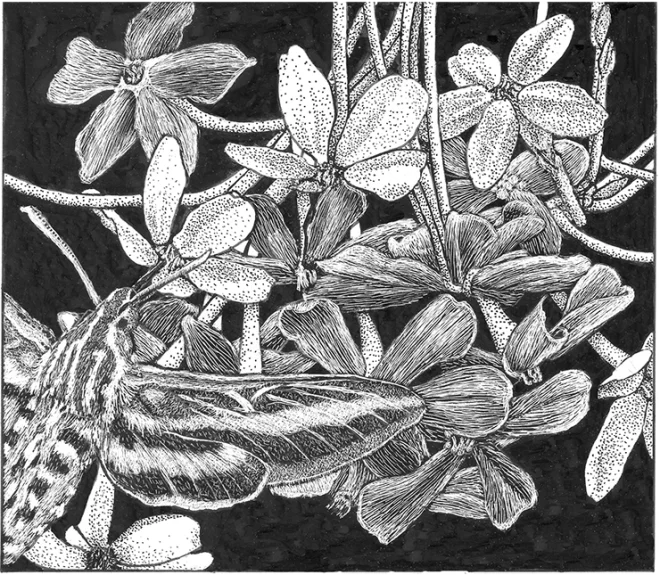
I envy those who live in warm climates, where “tender perennials” are simply “perennials” to them. Each year I plant perennial plants like lavender, knowing that it will die in the winter while someone a few zones below me has a perennial lavender shrub lining their walkways!
In today’s story, “Winter Miracle”, Susan P. Blevins talks about her two prized perennials that deliver year after year. When I thought back to my most generous perennials, I originally thought of my sage, which will deliver even in the snow and only dies back for about a month a year before re-sprouting. But I think the real champion of my garden is oregano, because even though the leaves are soft and tender, the plant just keeps coming back.
I was so excited when I first planted my oregano. I had visions of it becoming a giant, thriving herb that would fill my kitchen with its delicious aroma. And I wasn’t wrong. By year two, the oregano started growing like crazy! It was popping up all over the garden, and before long, it was towering over the other plants. It seemed to be getting bigger by the day, and there’s only so much pizza a girl can make with fresh oregano. At first, I was thrilled. More oregano for me to use in recipes! But then I began to worry … What if it took over the garden? What if it became a weed and started invading other plants?
I tried to cut it back, but no matter how much I chopped off, it just kept growing! In the end, I noticed it was blocking out weeds, so I let it run wild. Nowadays, you can’t walk through my garden without stepping on oregano, but the other flowers seem to love it, and it keeps a lot of buggy pests away too. At least it smells good to me!
I guess it’s nice that unlike the author of today’s story, I won’t ever need to worry about frost being an issue for that perennial!
Discover More Joy of Gardening
This story comes from our archive spanning over 30 years, and includes more than 130 magazine issues of GreenPrints. Pieces like these that inject the joy of gardening into everyday life lessons always brighten up my day, and I hope it does for you as well. Enjoy!

Winter Miracle
How my precious Rangoon Creeper came back to life.
By Susan P. Blevins

There are two queens that reign supreme in my garden here in Houston. Fortunately, they bloom at different times so there are no jealous squabbles. The first great lady is my Texas Mountain Laurel, with her luxuriant clusters of purple, wisteria-like blossoms and a fragrance that lingers, heavy and sweet in the air, especially after rain. The bees go insane for her while she is in bloom.
The second monarch to rule in my garden—and, I must confess, she is my first love—is my Rangoon Creeper. This is a semi-tropical climber that sports many clusters of quite large flowers, which change in color with age, supposedly to gather more pollinators. The flower is initially white and opens at dusk to attract hawk moths, with their long tongues for pollination. On the second day it turns pink, and on the third it turns red, attract-ing day-flying bees and birds. The vine is therefore soon covered with multicolored clusters that are spectacular, but it’s their heady, exotic, sensual fragrance that really makes me swoon. It evokes A Thousand and One Nights, Kismet, and the Hanging Gardens of Babylon (you get the picture). Houston is currently classified as USDA Zone 9, so I have no problem at all cultivating such a tropical beauty.
Not, that is, until last Winter.
We experienced a much colder Winter than usual: temperatures dipped down at night into the upper 30s on many occasions. But the real problem arose when we had three nights in a row of temperatures below freezing. Three nights were two too many for my Rangoon Creeper. I went out on the fourth morning and found drooping, blackening leaves. After ten years of living happily in my garden, she had been annihilated in just three nights. I wept, but left the leaves on just in case.
Early Spring arrived, time to prune and fertilize and do the other garden chores I didn’t do in Winter—one of which was the sad task of cutting down the two-stories-high creeper. I cut lower and lower down the twisting stems, hoping to find green at some point, but she was dead all the way down to the ground. Devastated, I vowed to plant another one in her place if I could find one.
Then it came to me that I should try the “laying on of hands,” an Episcopal Church ritual that I have participated in many times—and even performed privately. After making sure no one was around, I squatted down and held my hands over the dead stump. I channeled energy down through my head, out of my hands, and into the plant, while praying for life to return and visualizing the plant coming back to life and blooming once more. I did this twice, two days in a row. Then I checked it every day for a week. I couldn’t see anything happening, so I gave up.
A few weeks later, as I was going in my front door, I glanced down at the stump, now covered with maidenhair fern fronds—and thought I sensed something. I bent down and pulled the ferns apart so that I could see better. There, nestled in the dead grey wood, was the beginning of a reddish-green shoot about a quarter of an inch long. I burst into tears. I could hardly believe it—it was so tender, so new, so trusting.
I watched my revived Rangoon Creeper leap from its tiny beginnings until it once again covered the entire area it had previously covered, erupting upwards and framing the high arch over my front door. It bloomed for me, a little later than usual, because of course it had to make up for lost time, but it kept blooming in wave after wave, right into Fall. It almost felt as though the vine was thanking me.
I choose to believe that it was my prayers and faith that nudged the creeper back from the brink, but some readers may think that is fanciful and that it came back because the ground didn’t freeze completely so it was able to spring back to life from the root. They are most welcome to believe that, because of course we shall never know. But I have witnessed miracles of healing before, so why not in this case? I believe in the power of prayer. Why should nature not respond when we pray with love and faith?
One thing is very clear to me, and that is that the weather, indeed, is changing: all gardeners know that. We are seeing lower temperatures in Winter, higher temperatures in Summer, and frequent, devastating flooding. So this Winter I am taking no chances. I have bought agricultural fabric to cover up my Rangoon Creeper—and other tender garden darlings.
The least I can do is keep them snug. ❖
By Susan P. Blevins, published originally in 2019-20, in GreenPrints Issue #120. Illustrated by P. Savage

Do you have a similar or related story about perennial plants you’d like to share? Leave a comment below, I’d love to hear it!




This is the first time I’ve been reading the stories and I’m finding the story really fascinating. And I also want to say that that drawing is so beautiful. I’m gonna try and use it on my handmade cards. I hope that’s not going to get me in trouble, I don’t sell my cards.
that was awesome!! I also want to grow herbs as well as succulents and flowers but my “green thumb” isnt as it used to be
the same freeze that took down her Rangoon also took my Texas Ruby Red Grapefruit it broke my heart as I had grown it from seed , rescued it from my husband when he thought he would take the chainsaw to it because it was not producing any thing. that year we got 7 beautiful Ruby Reds (his favorite BTW ) increasing each year and over 200 the year she died. I also lost my lemon, kumquat, and louquat trees but none hurt like the loss of RUBY